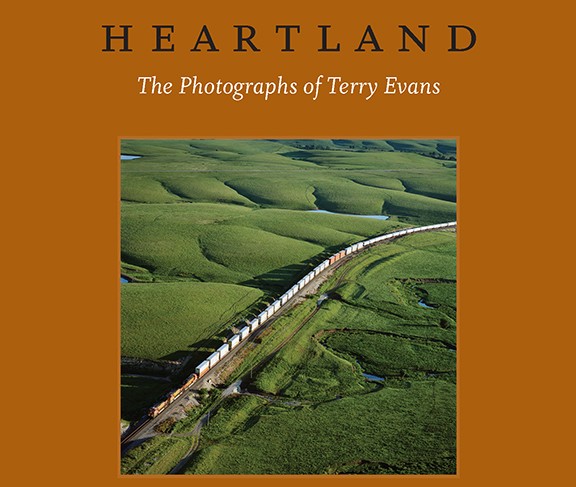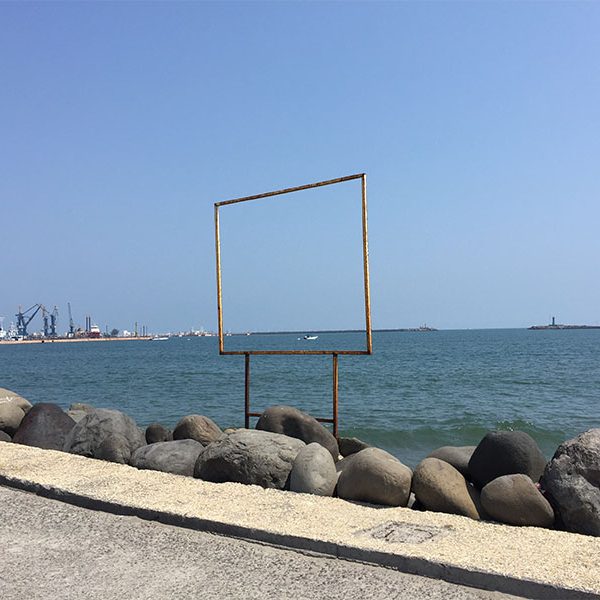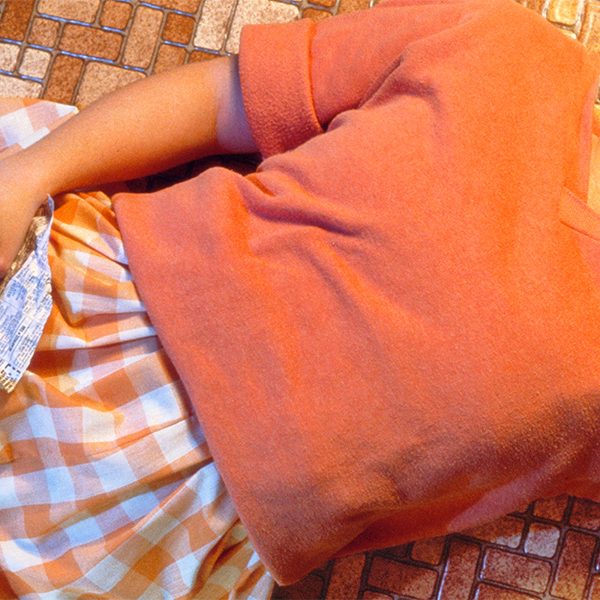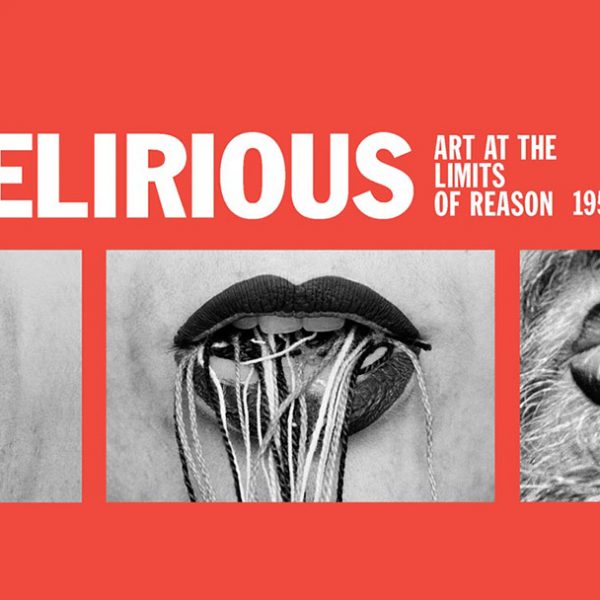Curator Keith Davis on the Photography of Terry Evans
Keith F. Davis, Senior Curator of Photography at the Nelson-Atkins Museum of Art and author of Heartland: The Photographs of Terry Evans, writes on the biographical and landscape influences on the esteemed American photographer and the artist-curator collaboration that shaped both the book and accompanying exhibition on view until January 20, 2013.
Keith F. Davis—
Great photographs can powerfully underscore the value and meaning of familiar things—the people and things immediately around us. Many of the most enduring bodies of work—by artists as diverse as Alfred Stieglitz, Helen Levitt, Harry Callahan, Emmet Gowin, and Sally Mann, to name only a few—teach this lesson. As a logical extension of this idea, it is important to appreciate the talent of artists in our own communities, those we may have known and followed for decades.
For us in Kansas City, Terry Evans is a prime example of an artistic treasure “hidden in plain sight.” My own interest in her work goes back to 1980, when we first met through our mutual friend Tom Southall, then curator of photography at the SpencerMuseum of Art at the University of Kansas. At that time, Terry had only recently begun serious landscape work—she was still much better known as a social documentary photographer in the artistic tradition of Dorothea Lange. I’m sure I was not alone in 1980 in having no inkling of how far Terry would grow in the coming decades as a photographic artist.
 Terry was born (in 1944) and raised in Kansas City, Missouri. Her first art experience, as a child, came in the Saturday morning art classes given at the Nelson-Atkins Museum. She loved these classes as well as the overall context—the museum itself—in which they took place. She fondly remembers wandering the hushed corridors of the place (all museums were quieter in the 1950s!) to explore the rooms of Chinese, Renaissance, and modern art. Her excitement for art never stopped: she majored in painting and commercial art at the University of Kansas, in Lawrence, before getting married in the fall of 1968 and moving with her husband to Salina, Kansas, where they started a family. (They lived there until the early 1990s, when her husband’s employment required a move to Chicago.)
Terry was born (in 1944) and raised in Kansas City, Missouri. Her first art experience, as a child, came in the Saturday morning art classes given at the Nelson-Atkins Museum. She loved these classes as well as the overall context—the museum itself—in which they took place. She fondly remembers wandering the hushed corridors of the place (all museums were quieter in the 1950s!) to explore the rooms of Chinese, Renaissance, and modern art. Her excitement for art never stopped: she majored in painting and commercial art at the University of Kansas, in Lawrence, before getting married in the fall of 1968 and moving with her husband to Salina, Kansas, where they started a family. (They lived there until the early 1990s, when her husband’s employment required a move to Chicago.)
Terry became a photographer in Kansas and her work has been profoundly shaped by her devotion to the region’s people and landscape. In 1971, she began in a social documentary mode: her first project, “Poverty in Kansas,” took a deeply humane look at the most vulnerable segment of society. Between 1973 and 1976 she played a key role in three regional documentary projects: “Kansas in Transition,” “Kansas Survey,” and “Kansas Album.” She worked exclusively in portraiture in this period, but turned to the landscape in 1978. She spent a full year, from the spring of 1978 through the spring of 1979, making thousands of square-format black-and-white studies of one-meter-square sections of prairie grass. This was a life-altering experience—an intensive immersion in the rich complexity of nature and an almost Zen-like exercise in patient, nuanced seeing.
This work led logically to a much broader embrace of the natural world—and a profoundly personal sense of connection and respect. Over the following years, she recorded the prairie in all seasons, from both the ground and from above, in both black-and-white and color. Following her study of the untouched virgin prairie, she recorded “The Inhabited Prairie,” and then took a synoptic perspective on the subject in her “From Canada to Texas” series, an aerial survey of the full geographic scope of the North American mixed grass prairie. Many other projects have followed: “Disarming the Prairie,” “Specimens,” “Matfield Green,” “Revealing Chicago,” and more. Her current project, begun in 2011, focuses on the oil and gas boom in North Dakota—with an emphasis on the very mixed human impact of this economic boom, and the transformation (to put it mildly) of this remote and formerly lonely landscape.
These series vary significantly in subject, viewpoint, and mood. What unites them, however, is a genuinely engaging sense of curiosity and respect. Terry operates as an artist—her background in painting and drawing, and her love for the graphic power and integrity of abstraction, provide a conceptual bedrock for everything she does. At the same time, she loves the mystery of things close at hand and too often taken-for-granted. She has always tried to understand the reality—the nuances and universal implications—of things ordinary yet essential. The result is a powerfully refreshed sense of awareness, discovery, and appreciation.
All of us in the Nelson-Atkins Museum’s department of photography had been following Terry’s career for years, reviewing new work as regularly and systematically as we could. In about 2008, we first proposed undertaking a serious retrospective. This was delayed for a couple years by other projects, but eventually landed on the calendar for 2012. From the beginning, we were unanimous in our dedication to this project and contributed equally to most of the process: the review of work, the final selection of the show’s 100 prints, and the nature and layout of both the exhibition and the accompanying book.
For our Heartland book, the division of labor was easily decided. I wrote the first chapter, providing a biographic and stylistic overview of Terry’s career. Jane L. Aspinwall, associate curator, contributed a chapter on the history of artistic and literary responses to the prairie, and Terry’s place in that honored lineage. April M. Watson, associate curator, wrote on the history of the aerial perspective in art and photography and its centrality to Evans’s work. Kaitlyn Bunch organized a definitive chronology of Evans’s career and Terry herself contributed a personal bibliography of sources and influences—a succinct form of intellectual autobiography. I really like the way these individual components contribute to a larger picture of the artist and her work—and I hope our readers do, too.
A project like this can be enormously enriching for both the curators and the artist. For us, it demanded a deep engagement with the body of work—not simply the pictures included in previous books, but less familiar ones from the full range of her production. The final selection for the exhibition was difficult, but—we think—logical. We began with the key series we wanted to represent. Given the nature of our space, and the scale of Terry’s prints, we decided on a final exhibition of 100 prints. We then came up with rough guidelines for each series: up to 10 in one group, perhaps as many as 15 in another, only 3 or 4 in yet another, and so on. We then whittled the checklist down from about 130 or 140 to our goal of 100. This process forced us to make hard decisions on the relative importance of each series, and the overall texture of the visual story we wanted to tell. The book provided an inherently more accommodating structure: all the exhibition prints are reproduced as well as several dozen more.
Terry was involved at key points throughout this process: we developed our initial checklist with her and asked her to review every significant revision. She was justly concerned about the representation of her most current work in North Dakota. We solved this issue by holding five or six slots open at the end of our checklist for a final review of new pictures. That was accomplished to everyone’s satisfaction at the very end of the process. As a result, we were able to include images made in May 2012 in a book that had to go through the final design process at the end of July.
And, of course, the physical integrity of the book stems from the quality of the labor represented in it. The vast experience and superb judgment of Thomas Palmer, Malcolm Grear Designers, and Meridian Printing all contributed to the beauty of the final production. As a longtime “book addict” myself, I have a great love and respect for books that are not only rich in content but well-crafted and beautiful artifacts in themselves. I hope that Heartland is judged to be a successful combination of those virtues.
Keith F. Davis is Senior Curator of Photography, Nelson-Atkins Museum of Art.



























I liked the William Garnett portion of Evan’s work, nice work if you can afford the plane and pilot. The tight Harry Callahan shots of grass were attractive. Her portraits were pleasant in a mannered Hallmark Cards sort of way. Overall this was a boon for the Greater Midwest Chamber of Commerce.